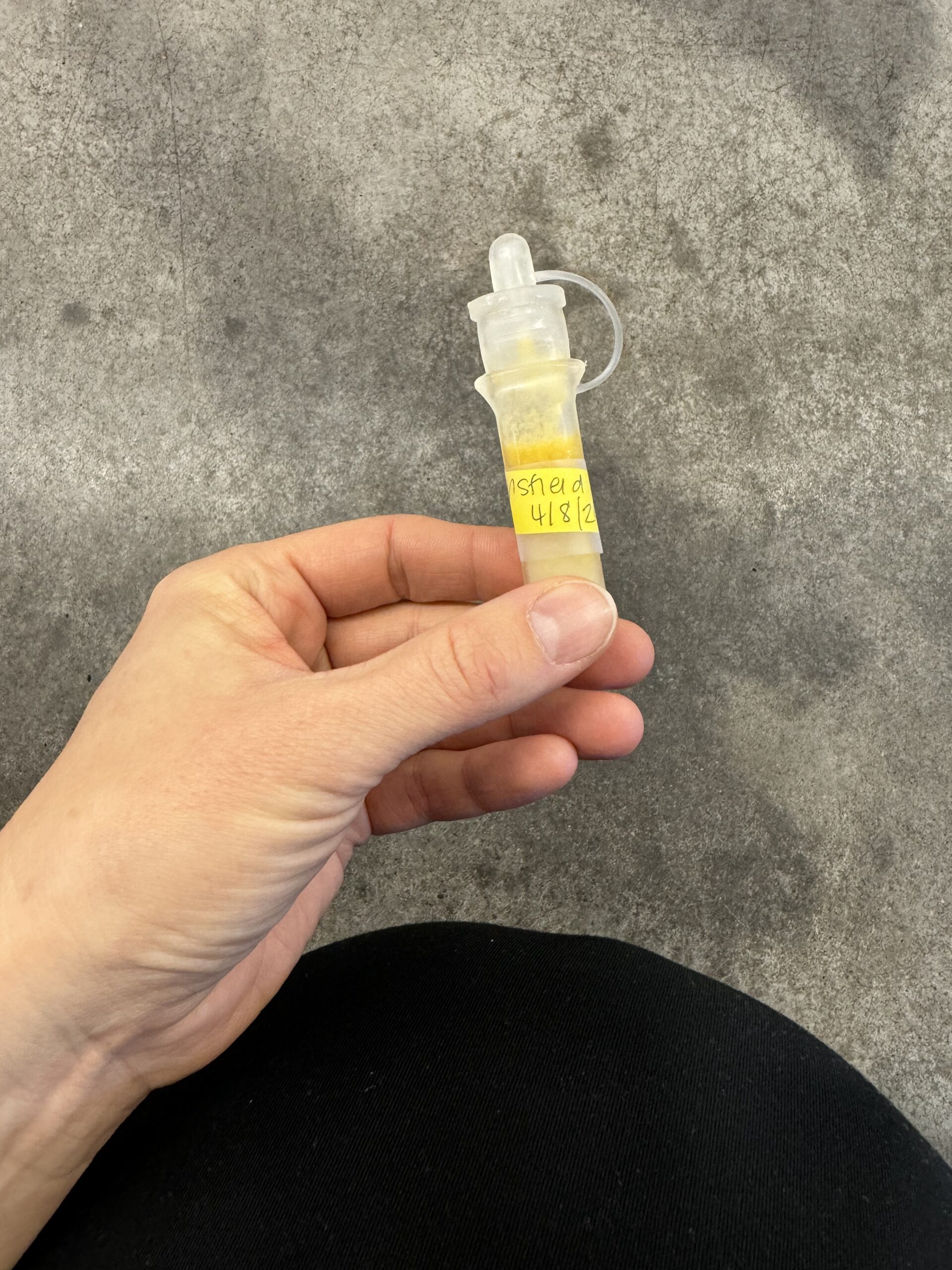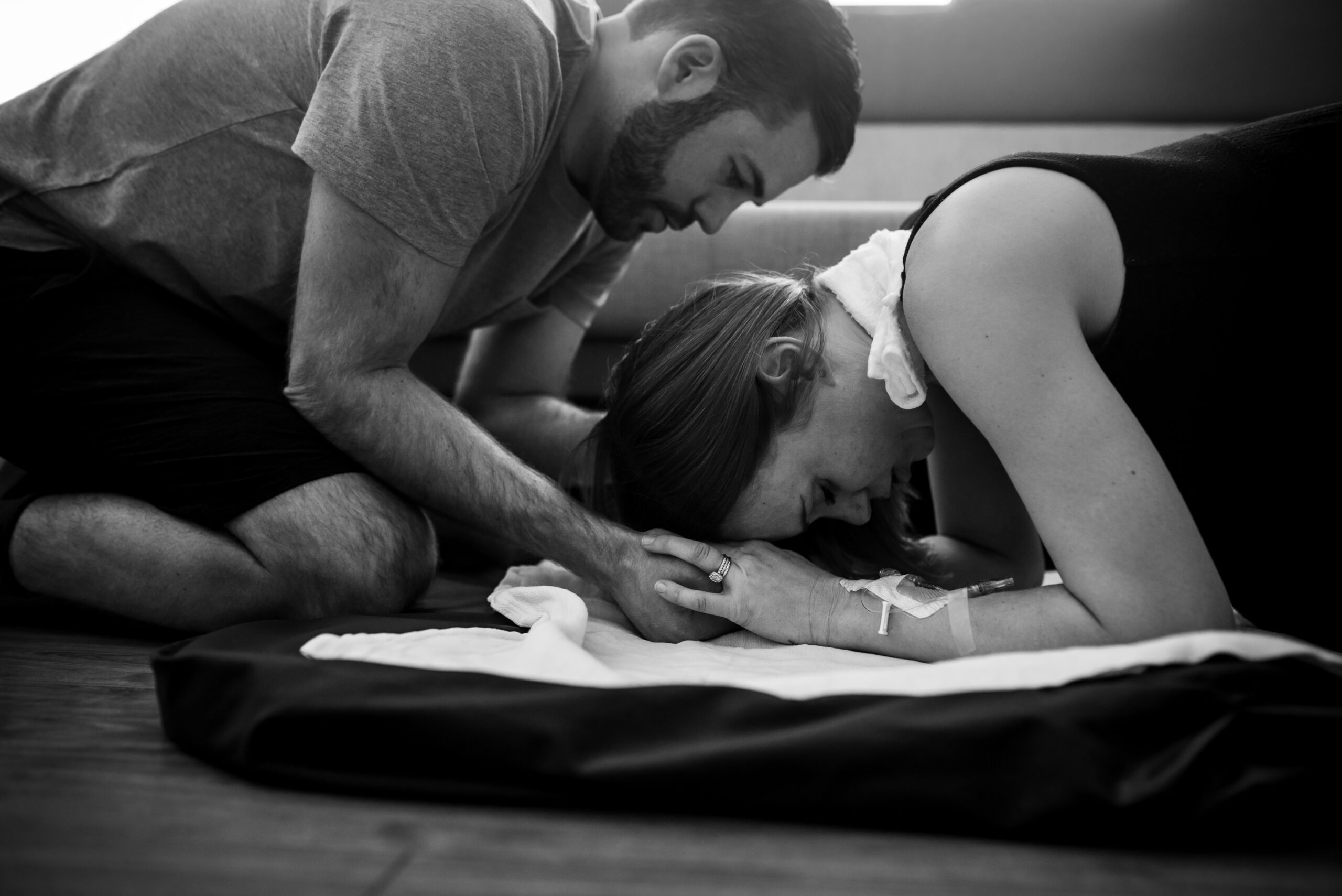Pregnant and hearing alllllll the chatter about colostrum? I get it – and I know that for a ton of us, it’s actually a pretty new topic. Especially the conversation about collecting colostrum before birth ( ⬅ heard of that?) and then giving it to baby after birth. If you’re nodding along saying “yep, all of this is why I’m here,” I’m so glad! This topic is cool, I’m glad it’s being talked about, and I think it’s so important for those who want to breastfeed!
In this blog, I want to deep dive that question “What is Colostrum?” I’ve got a “sister” post to this post that also then deep dives how-to actually collect colostrum. Definitely read both of them so you get the full picture of what colostrum is, what value it offers, and how take advantage of it’s value!
See: Birth Prep: How-To Guide for Colostrum Collection when you’re ready!
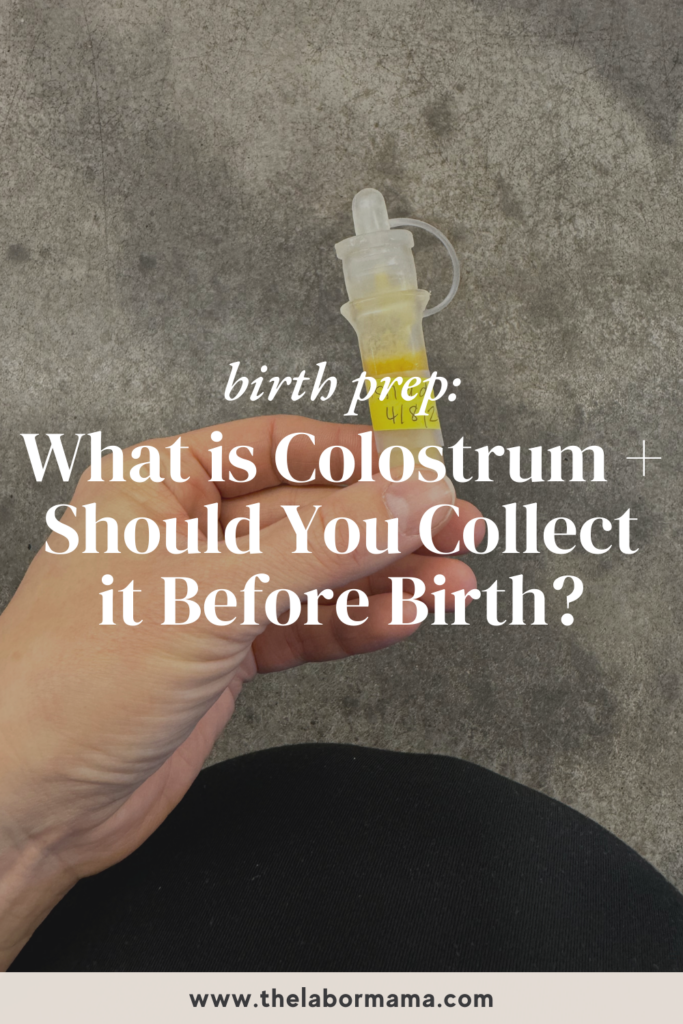
Who is The Labor Mama and Why Am I Here?
Hey friend! I’m Lo – also known around here and social media as The Labor Mama. I’ve spent my nursing career in labor, delivery, and postpartum, have birthed 4 of my own babies, have labored thousands of mamas at the bedside, have taught thousands of students online, and have even delivered a few speedy little babies with my bare hands (oops).
Here at TLM, I offer online classes about birth, postpartum, newborn care, and breastfeeding to empower you the way everyone should be. The education + support I offer gives you experience, evidence, and empathy; you’re getting all of my years of “clinical” RN knowledge, honestly combined with my real experiences as a mama and a nurse. These are not your average hospital classes (those won’t do it, I promise), and honestly, birth, postpartum, and breastfeeding don’t follow a textbook or protocol anyway. You need to know so much more than that!
If you want to connect with me further, head to Instagram. There are hundreds of thousands of us over there learning together daily.
A note: This post may include affiliate links. This means if you make a purchase after clicking a link, I will earn a small commission (thank you)! Rest assured, this comes at no additional cost to you. You can read TLM’s full disclosure here.
What is colostrum?
Let’s jump to the very beginning first – what is colostrum? Colostrum is breastmilk! It’s the first of breastmilk your body makes. The process starts during the first stage of lactation – Lactogenesis 1 – which begins during the 2nd trimester of pregnancy. This stage of milk-making is mostly driven by the placental hormones. Their presence leads to breast changes and growth, including the creation of receptor sites within the milk making cells and the production of colostrum.
Colostrum milk, which is often thick, yellow or gold in color, sticky, and relatively low in volume, is often called a “perfect” food or “liquid gold” for baby. Its production can begin as early as 14 weeks or so of your pregnancy, and some choose to collect it at the end of their third trimester for the baby after birth. Colostrum continues to be produced throughout your pregnancy and is the milk baby gets from the breast for the first 2-3 days or so of life. The birth of baby and your placenta triggers the 2nd stage of milk production, and colostrum is slowly replaced by transitional milk (and then mature milk).
Ready to dive all-in on all things breastfeeding? Me too! Go take a look at The Breastfeeding Blueprint, an online course to empower your story together before pregnancy, day 1, and through the first months! See you inside!
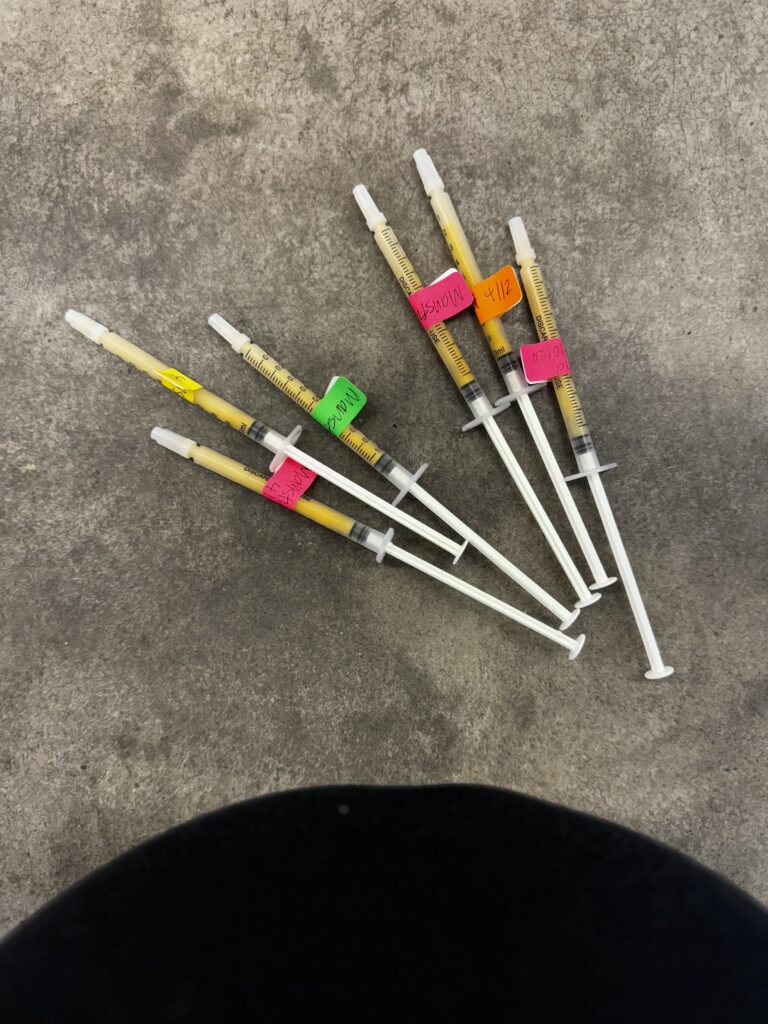
What is colostrum collection?
During pregnancy, some leak colostrum and some do not (I’ve never leaked). Both of these scenarios are normal. However, whether or not you notice you’re actively leaking, one thing many are now considering and/or actively trying is something called colostrum collection.
Colostrum collection is when you use some sort of receptacle, often a tiny syringe, spoon, or medicine cup, to catch the colostrum that is expressing from your nipples. Though I mentioned some actively leak this out, most will have to utilize hand expression to express and catch that colostrum.
A note: It’s important to understand that if you collect colostrum during pregnancy, you aren’t taking away from what your baby is getting those first days after birth. Your body is continually making this and will continue to do so until that second stage of milk production takes over after birth!
Why would you want to collect colostrum?
So, what’s the point of collecting colostrum before birth? It definitely is not something you have to do, but I do think there are a couple of great reasons to consider it if you’re low-risk and free to try it.
Colostrum collection teaches hand expression
Often, colostrum is collected via hand expression. And hand expression is one of the most important skills for establishing and encouraging your milk supply early on! Of course, for most the goal is to have baby latching at the breast and eating there during the golden hour. But if that isn’t going well quite yet, if baby is sleepy, if you two are separated, then you can hand express in that first hour (and the hours beyond). Research shows us so many benefits to early and frequent colostrum collection. This includes:
Collecting in the first hour after birth
- Can decrease the time it takes for milk to come in
- Has been linked to 130% more milk at 6 weeks postpartum
Collection through first days:
- Mothers find it more comfortable to do
- Volumes collected are more than what is collected via electric pump
- Greater fat content in colostrum
- Infants who receive colostrum after feeds lose less weight/begin gaining sooner (like a “top off”
- Higher breastfeeding rates at 2 months
The more comfortable you are with hand expression right now, the more comfortable you will be with utilizing it after birth as well!
More helpful reading: What is The Golden Hour After Birth?
Colostrum is “liquid gold”
You may have heard the term liquid gold in regards to colostrum. This early milk is absolutely packed with all kinds of things that are great for your new baby, including protein, antibodies, white blood cells, beta carotene (a vitamin A precursor) and immunoglobulins like IgA that support baby’s gut health. It’s also lower in fat and lactose, so it’s easier to digest for babe and has natural laxative properties that can help get those first meconium stools out too.
When baby is born and latching at the breast, they are getting colostrum and it’s benefits, which is great! But when you’ve collected prenatally, you can give them even more of this good stuff! You can also hang onto it and pull it out for baby when they have their first cold, during a sick season, etc. and give them a little boost with this super food ?.
Colostrum for low blood sugar or jaundice
Collected colostrum has a variety of beneficial uses after birth. If your baby happens to run into situations like jaundice or hypoglycemia (low blood sugar), any colostrum you’ve collected can be used for any supplementation needed. Typically, getting more milk into baby is one of the primary goals for low blood sugar or jaundice treatment, so the colostrum instantly becomes very useful!
You do not always have to supplement your baby if you have gestational diabetes, Type I or Type II, or if baby has jaundice, but those scenarios do place baby at a higher risk for needing supplementation the first days. The intake of more milk helps baby’s sugars come up (for any hypoglycemia) and it makes baby stool more (which helps the body get rid of the bilirubin “waste” that causes jaundice). So, if you have colostrum collected, that could potentially be enough supplementation for baby and you don’t need anything else!
A note: Interestingly, colostrum is lower in sugar (carbs) than “mature” milk. It’s possible that hypoglycemia for baby may need more supplementation with milk or formula that has more sugars. But, it’s still a great starting place and is often more than sufficient!
Benefits to the breastfeeding relationship
Some studies have shown that collecting colostrum prenatally can actually increase the rates of exclusive breastfeeding (1, 2), particularly for those of use who are diabetic or have gestational diabetes. There is also research that has shown that this antenatal expression can help milk come in quicker after birth (I referenced some of that above)!
I also feel like when you have some colostrum collected or you’ve been practicing hand expression prenatally, you just feel more confident and ready to tackle what could come after birth. You’ve got skills and knowledge that help you understand what your body can do, what baby needs, and how you can help!
If you want help with this breastfeeding relationship – I can give you that! Postpartum RN, CLC, mama of FOUR breastfed babies – The Breastfeeding Blueprint course gives YOU all of my hard fought for education and saves you time and tears and giving you one place to go for all your breastfeeding questions, concerns, and hopes. Doors are open right now!
Do I have to collect colostrum?
You absolutely do not have to collect colostrum – okay? I didn’t even know about with my first 2 babies, didn’t do it, and our breastfeeding relationships still were great. It’s also important to know that if you collect it and then don’t need it or use it after birth, that’s fine too! Save if for baby’s first cold, combine it with their Vitamin D drops, top off a bottle for them later on, give it to them during flu season. It doesn’t lose it’s value, so you can certainly give it at another time.
Lastly, you can also collect colostrum and give that to baby post birth even if your plan is to utilize formula. The colostrum is there, it’s so good for them, and many of it’s properties can’t be replicated in formula. So there is no harm (if you want) in collecting what’s there, giving that to babe after birth, and then continuing on with your other feeding plans too. You really do have options here, so don’t feel to constrained by some specific scenario or need!
The takeaway on the benefits of colostrum
Hopefully, this blog helps you understand what “all the fuss is about” when it comes to colostrum. It’s a pretty incredible part of the breastmilk process, and I think it’s pretty cool that you can utilize it even more in ways that prove beneficial to you, baby, and your breastfeeding relationship.
If you’re interest is piqued about collecting and doing this – yes! Jump over to this blog too for the
“rules” and how-to of the process.
Did you collect colostrum? Are you planning to? I’d love to know in the comments! xx – Lo
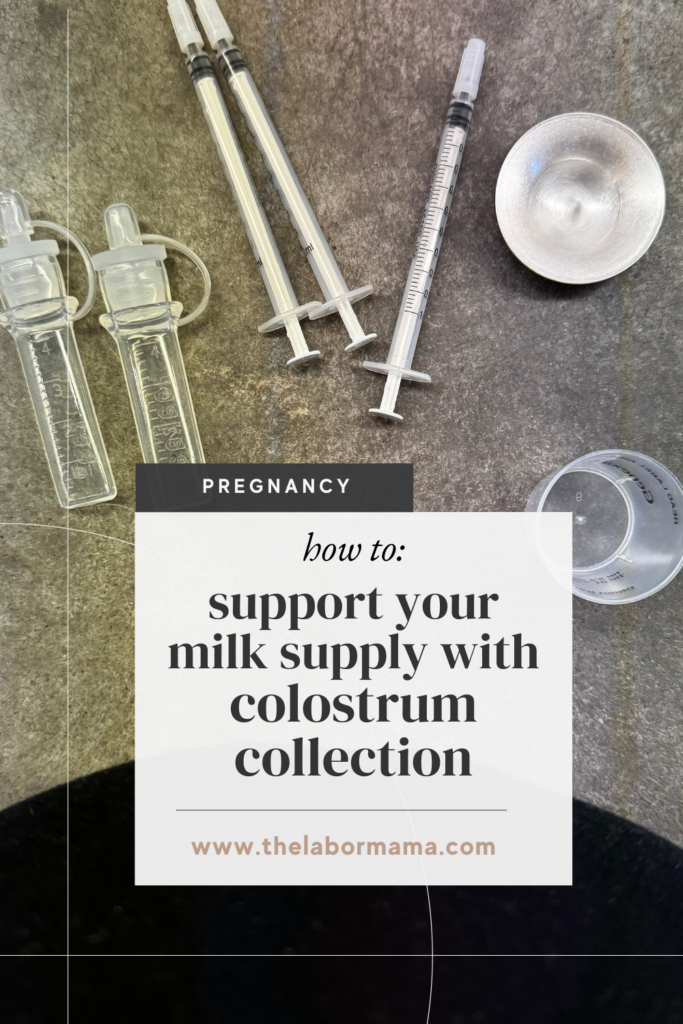
More resources (and freebies!) for you to take a peek at are below, and don’t forget about my online course options here:
